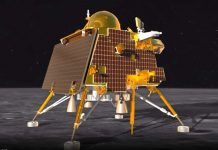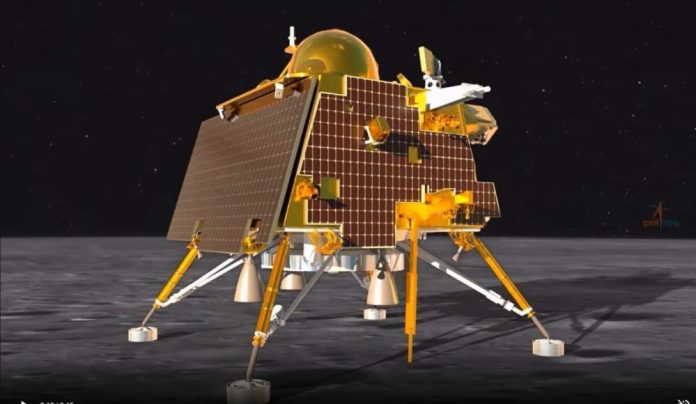In a Remarkable First, India’s Chandrayaan-3 Successfully Lands Near Moon’s South Pole. India has etched its name in history as the first nation to successfully land a spacecraft near the south pole of the Moon named “Chandrayaan 3”. The achievement marks a significant advancement in India’s space program and underlines its growing capabilities in the realm of interplanetary exploration.
This groundbreaking feat was accomplished when the Indian spacecraft executed a precise landing maneuver, gently touching down in the challenging terrain near the lunar south pole. The mission not only demonstrates India’s engineering prowess but also contributes valuable insights to humanity’s understanding of the Moon’s lesser-explored regions.
Indian space scientists and engineers at [Space Agency’s Name] displayed exceptional dedication and expertise throughout the mission’s development and execution. The successful landing near the Moon’s south pole opens up new possibilities for scientific research, including the study of lunar geology, potential resource exploration, and preparation for future manned missions to the Moon.
The global space community is watching with admiration as India’s accomplishment propels the nation into a select group of countries capable of deep-space exploration. As ambitions turn towards even more ambitious missions, India’s achievement serves as a beacon of inspiration for aspiring spacefaring nations worldwide.
In an era where space endeavors are fueling technological innovation and expanding humanity’s understanding of the cosmos, India’s historic achievement stands as a testament to human determination and the power of scientific exploration.
The Chandrayaan-3 mission has captivated public attention since launching nearly six weeks ago in front of thousands of cheering spectators. Politicians staged Hindu prayer rituals to wish for the mission’s success, and schoolchildren followed the final moments of the landing from live broadcasts in classrooms.
Google Think Apps 2023 Facilitates Global Success for Over 500 Developers from 136 Studios
Chandrayaan-3 took much longer to reach the Moon than the Apollo missions in the 1960s and 1970s, which arrived in a matter of days. India used rockets much less powerful than the ones the United States used back then, meaning the probe had to orbit the Earth several times to gain speed before embarking on its month-long journey.
The lander, Vikram, which means “valor” in Sanskrit, detached from its propulsion module last week and has been sending images of the Moon’s surface since entering lunar orbit on August 5.
Now that Vikram has landed, a solar-powered rover will explore the surface and transmit data to Earth over its two-week lifespan.
Former ISRO chief K. Sivan told AFP that India’s efforts to explore the relatively unmapped lunar south pole would make a “very, very important” contribution to scientific knowledge.
Only Russia, the United States, and China have previously achieved controlled landings on the Moon. Russia launched a lunar probe in August — its first in nearly half a century. If successful, it would have beaten Chandrayaan-3 by a matter of days to become the first mission from any nation to make a controlled landing around the south pole. However, Luna-25 crashed on Saturday after an unspecified incident as it prepared to descend.






























